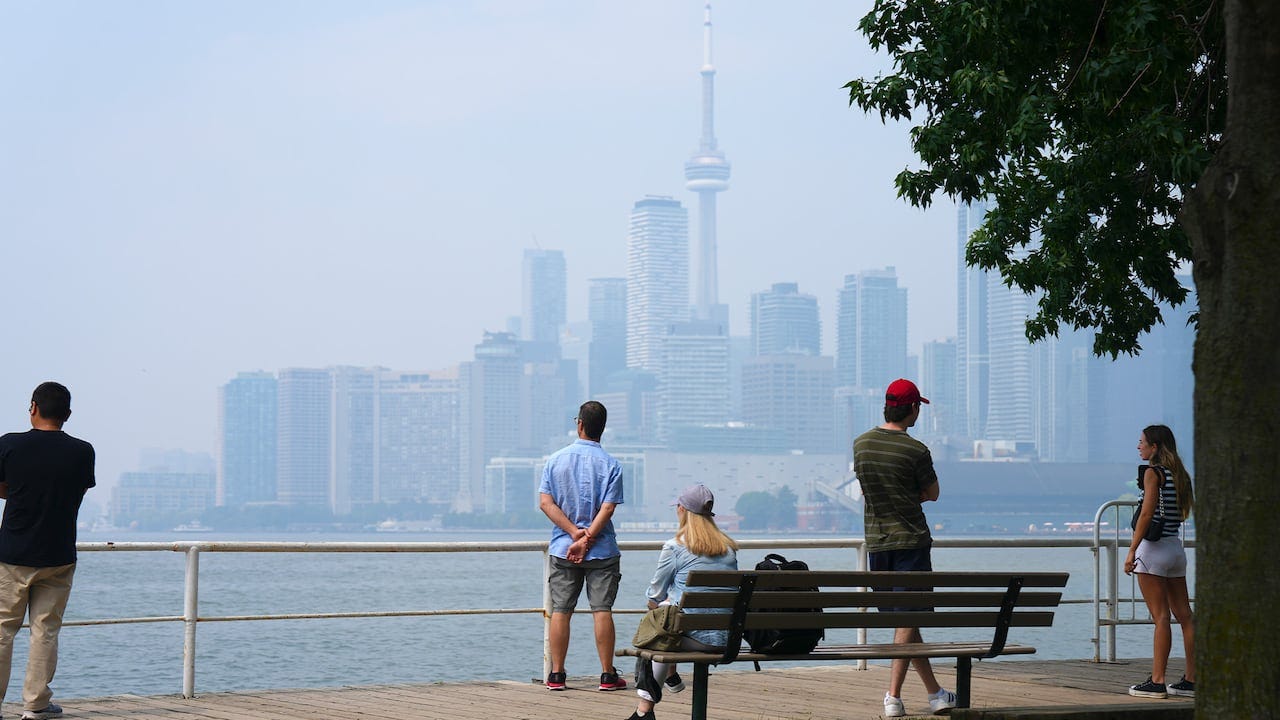Brace for more smoky skies as Canadian wildfires rage
A dire August forecast map shows "well above average" fire severity across a swath of Canada.

Smoke from Canadian wildfires again plagued portions of the northern United States on July 16, prompting air quality alerts from Illinois to Maine.
This includes portions of Michigan, where the National Weather Service said that due to the wildfire smoke, "it is recommended that, when possible, you stay indoors and keep time outdoors short and avoid strenuous activities."
The smoke is coming from 81 uncontrolled active wildfires in Canada across several provinces, including British Columbia, Alberta, Manitoba and Saskatchewan.
Smoke to continue
Smoke from western Canadian fires is forecast to continue to impact portions of the United States for the near future, forecasters said on July 16, as fires are expected to persist: "We expect that there is a high potential for wildfires in the next three months," atmospheric scientist Djordje Romanic of McGill University told Paste BN in an e-mail July 16.
This includes a dire forecast map for August from the Canadian government, which shows that most of the four huge western Canadian provinces (British Columbia, Alberta, Saskatchewan, and Manitoba) all face "well above average" fire severity.
AccuWeather meteorologist Paul Pastelok told Paste BN that the wildfires are likely to continue well into October in Canada, so smoke will continue to be an issue in the United States into the fall.
'A pretty bad situation'
While our northern neighbor's wildfire season hasn't been as bad as the record-shattering 2023 season, the province of Manitoba is enduring its worst year for wildfires in roughly three decades, according to the Manitoba government. The province remains under a state of emergency due to the fires.
The weather forecast for the next couple of weeks in fire-plagued Manitoba shows little relief from the dry conditions that have plagued the western provinces since the late spring, Environment Canada meteorologist Crawford Luke told Paste BN on July 16. "It's a pretty bad situation," he said.
Although the number of fires in Canada is average for this time of year, the area burned to date is significantly more than the 10-year average, according to the Canadian Interagency Forest Fire Centre (CIFFC).
And according to the Canadian government, "Canada is at National Preparedness Level 5, indicating that there is full commitment of national resources and demand for interagency resources through the Canadian Interagency Forest Fire Center is extreme. Since national availability of resources is limited, international resources are being mobilized."
What should I do when an air quality alert is issued?
According to Michigan's Department of Health and Human Services, here are some indoor methods to protect yourself from the pollutants outside:
◾Close windows and keep outside doors shut.
◾Run the air conditioning. If your air conditioner has a fresh air option, close the intake.
◾Use an air filter (rated MERV-13 or better) to capture fine particles from smoke.
◾Avoid activities that create pollution, such as frying foods, sweeping, burning candles, vacuuming and smoking tobacco or other products.
◾Seek shelter elsewhere if you do not have an air conditioner and it is too warm to stay inside with the windows closed. Call or contact your local health department to find out if there is a shelter or cooling center nearby. Or consider spending time in an air-conditioned public place such as a library, mall, movie theater, etc.
Contributing: Sarah Moore, Lansing State Journal